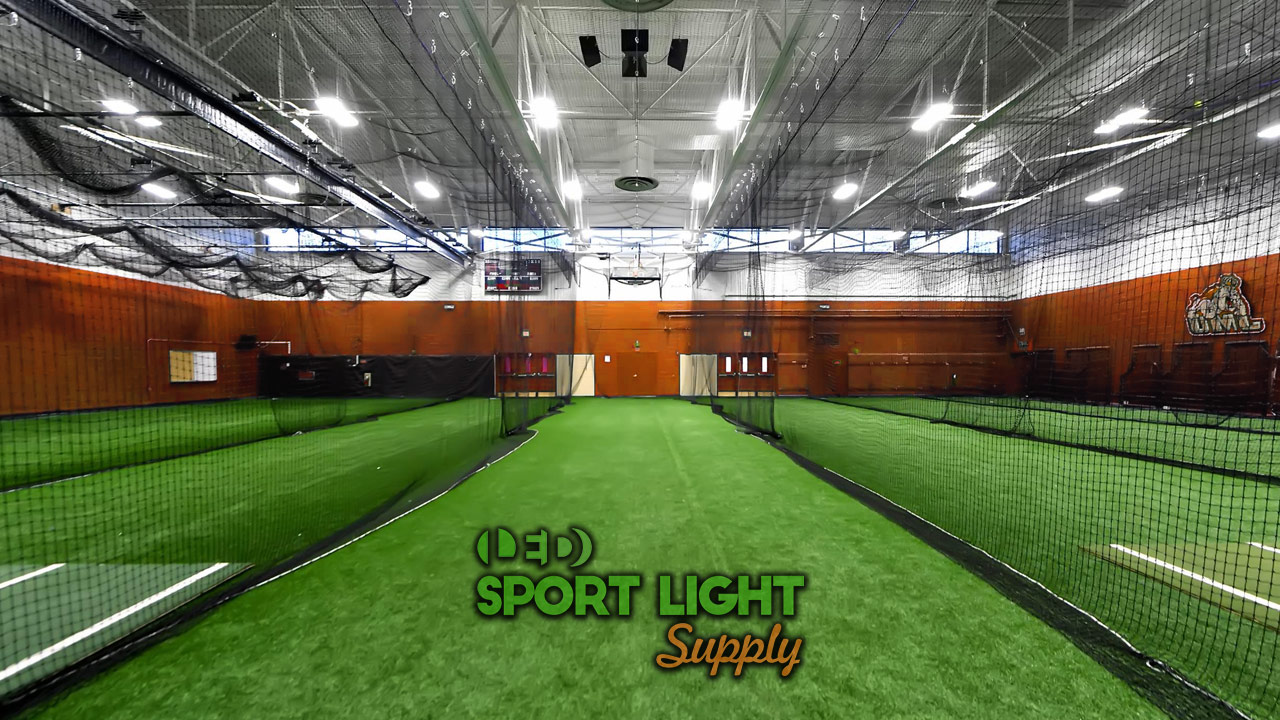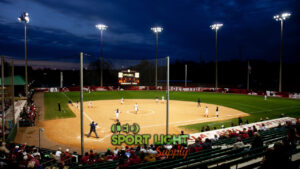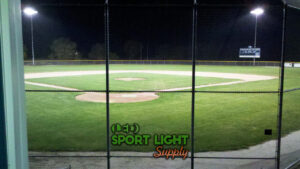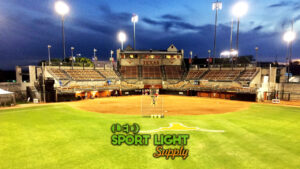One of the key skills for softball and baseball players is the ability to hit the ball, and the best place for batting practice is in a batting cage. Some batting cages are built outside, while others are built indoors. Whether you have an outdoor or indoor batting cage, one important factor exists, and that is how the cage is lit so that the practice can take place during the evening. There is much more to the provision of lighting that is just providing light. Using the correct light can enhance the user experience and enhance training. We hope that this guide will improve your understanding of this topic.
Outdoor Batting Cage Ideas
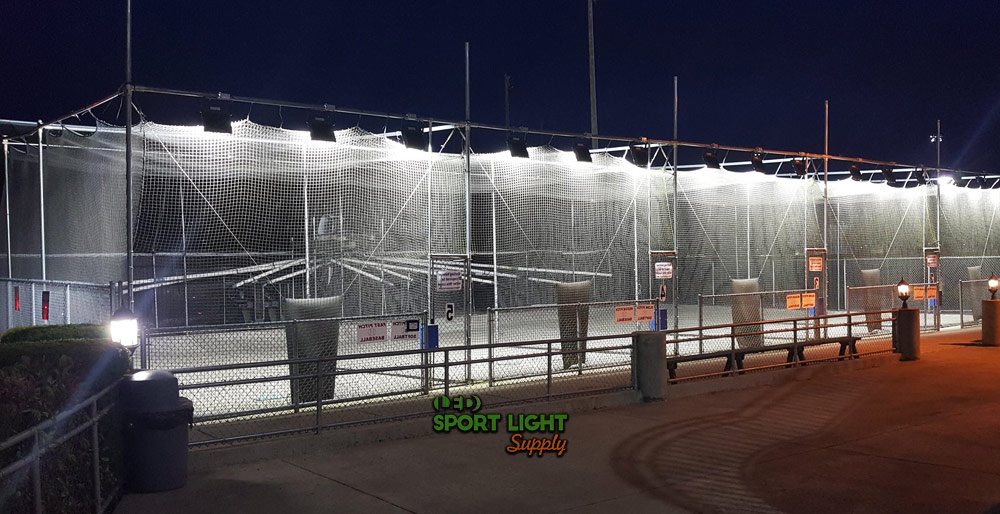
1. What Lights Should Be Used for Outdoor Batting Cages?
As with most other lighting types, batting cage lighting has a variety of requirements that need to be addressed. In a batting cage, the focus of the hitter’s eyes should always be on the ball. Hitting the ball depends on the hitter seeing the high-speed ball as it hurtles towards them. Differences between the level of light along the trajectory can create the illusion that the ball changes speed and impact the hitter’s success. Badly designed lighting that allows this variance in intensity should be avoided. Glare should also be avoided when setting up lights for a batting cage.
We will now look at some types of lighting that may be used.
a) Flood Lights
The typical size of a batting cage is 70×40 feet. They are 12 feet tall. To light a batting cage, you need to provide uniform light to cover the cage area’s whole. One method of achieving this can be to mount Floodlights close to the cage and flood the entire batting cage with light, ensuring that the light levels are uniform and the lights are mounted in such a way that they do not produce glare.
If this lighting method is chosen, it is important to ensure that the lights cannot be hit by fast-moving balls or utilize anti-shock lenses that can withstand high impact objects hitting the lights.
b) Spot Lights
To light up a set area of 70×40 feet, another option is to use Spotlights that are mounted well away from the batting cages and have a tighter beam that is restricted to the area that you wish to illuminate. These lights may be mounted on existing poles that are used for other purposes.
2. Height of Installation
The installation’s height depends on the type of lights used, whether they are spotlights or floodlights. Once a height is selected, it is then a matter of deciding what beam angle is required to provide the required area with uniform lighting whilst not producing glare issues.
3. Beam Angles
The optimum beam angles for spot light installations should be between 25 and 40 degrees, depending on the height. You will need to select a much wider beam angle for floodlit batting cages with lighting mounted much lower. Lamps with many different beam angles are available, so you can find one that is just right.
Indoor Batting Cage Ideas
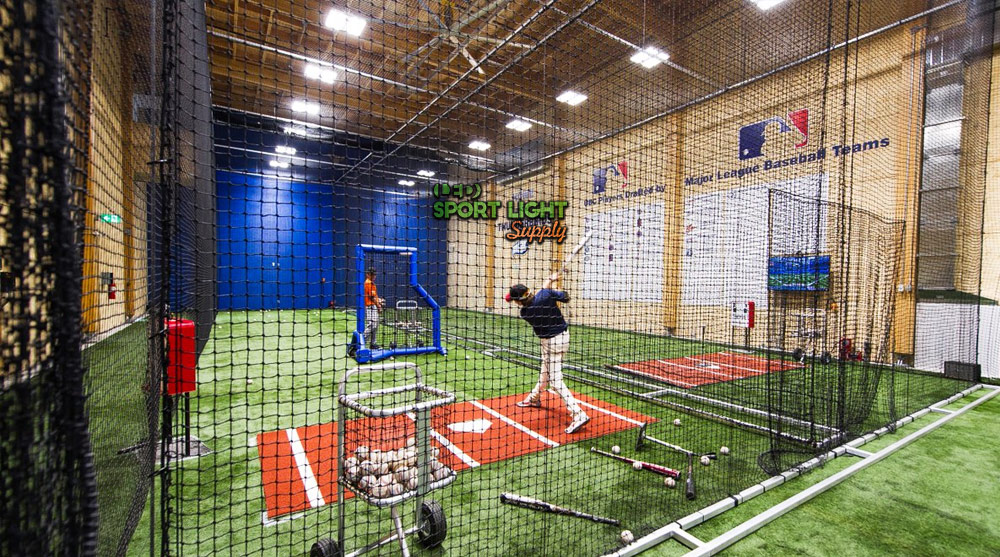
1. What Lights Should Be Used for Indoor Batting Cages?
a) Low Bay Lights
Low bay lighting is typically used for lights intended for an indoor batting cage with a ceiling height of under 20 feet. High bay lighting is used to describe ceilings that are greater than 20 feet. The type of lighting that is used will depend on the installation height of the lights. Put, the higher the light installation, the smaller the beam angle is going to be. The amount of power you will need to light your indoor batting cage will depend primarily on the type of usage it will get. If it is purely just for recreational use, you may use as little as 200 to 300 lux. If the cage is to be used for serious training, a higher power would probably be preferable at 400 or 500 lux.
b) High Bay Lights
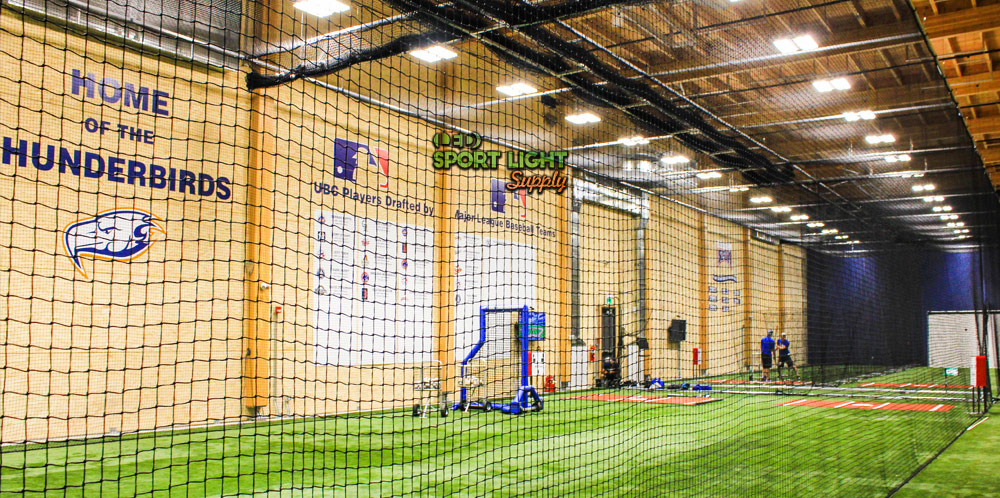
High bay lighting refers to ceiling heights at over 20 feet, typically less than 40 feet. There are three primary designs of high bay lights. They are UFO High bay lights, Linear High bay lights, and Vapor tight High bay lights. Different types of lamps are used, including LED, Induction lights, metal-halide lights, and fluorescent lights. Although they are not the cheapest these days, most people recommend LED lights as they last longer and are more efficient than incandescent lamps, which use more electricity and need replacement sooner.
Cross over lighting is of the utmost importance. There is greater uniformity of light across the cage. A minimum of three light locations is required to achieve this.
c) UFO
A UFO High Bay light is a circular disc that looks a bit like a classic UFO design. The lights inside the UFO housing are specifically designed to optimize the light over the cage area without having large reflectors.
d) Light Tubes
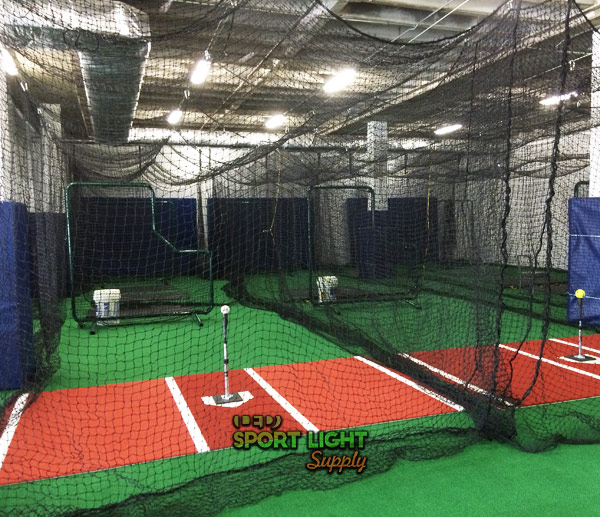 Most people are familiar with fluorescent lighting tubes. Linear LED lighting is designed as a replacement for fluorescent tubes. They are a better option as they use, on average, just 60% of the electricity a fluorescent tube will use.
Most people are familiar with fluorescent lighting tubes. Linear LED lighting is designed as a replacement for fluorescent tubes. They are a better option as they use, on average, just 60% of the electricity a fluorescent tube will use.
2. Height of installation
When designing a batting cage for use inside a sports complex, it is common to underestimate the cage’s height. It is recommended that there be at least 12 feet of clearance (remember duct work and pipes).
3. Beam Angles
If you have a high ceiling, you may require a beam angle of just 40°, whereas a low ceiling may be more like 60° to 90º.
Where to Put the Indoor Batting Cage Lights
Where to place lighting for batting cages will depend a great deal on the exact location of your indoor cage. There may be places that you can affix a light (for example- the ceiling), or you may be required to provide a mounting pole. If using poles in a low bay location, you may need four or six poles on which the lights can be mounted, just above the netting angled into the cage area with overlaps of light to provide uniform lighting. Mounting a light on a high ceiling, you can choose from the various kinds of light described above.
If mounting lights just above the netting, netting can become loose, and a ball may impact the lights. It is best to use impact-resistant lights in these situations.
Tips to Select the Best Batting Cage Lights
1. Benefits of LED over Halogen and Metal-Halide
When looking at current installations in sports centers, you will typically find three types of installation. These are Halogen, Metal Halide, and LED. In this section, I will summarize each of them.
a) Halogen
Halogen lamps use a filament. This filament gets hot when you run electricity through it. In fact, it gets scalding. The filament glows, producing a lot of heat and some light. Since most of the energy is spent producing heat, they are not very efficient as a form of lighting. Fortunately, the heat is projected from the front of the lamp, so the housing can be made of materials that otherwise would be affected by the heat. Their advantages are that they are quite cheap.
b) Metal-Halide
Metal-Halide and Sodium Vapor lamps contain gas that glows, unlike the Halogen where the filament glows. They do not lose the same amount of energy in creating heat, and more are used to create light. This makes them more efficient than Halogen. The problem with this type of lamp is that they will lose around 25% of performance after as little as 250 hours. They also have a short life, which means accessing the lamps that are mounted high off the floor. The big problem is that when they are switched off, they have to cool down before they can be switched on again, which is very inconvenient.
c) LED Lights
The more recent introduction, LED Lights, generates very little heat compared to halogen or Metal-Halide. When in use, the back will heat up and requires an aluminum box, but the front does not. The disadvantage is that LED lamps tend to be a larger area than Halogen or Metal Halide. Despite this, an LED lighting system is the best option as it is much more efficient and uses less electricity (saving money), and requires less frequent replacement than the others (again saving money).
2. Using Solar LED Lights
If you cannot connect to a regular electricity supply until recently, it meant you could not enjoy the convenience of sports field lighting. In 2009 Philips introduced a fully portable solar powered LED system that can illuminate a pitch without connection. It can provide eight hours of lighting on a single solar charge.
3. Dusk to Dawn Lights
For those wishing to provide lighting for sports areas that will turn on and off automatically, so staff is not required, there are “Dusk to Dawn systems” that will turn on at dusk, switch off at midnight, turn on again at 5 am, and then turn off at dawn. These times can be adjusted to local needs.
4. Larger Beam Angle Benefits for Broader Coverage
Larger angles of a beam can produce more uniform lighting and reduce dull patches. Designers these days use sophisticated technology to calculate angles and bean overlaps that keep the whole area bright but do not produce distressingly bright cross over areas.
5. Power and Lumen Selection
For purely recreational batting cages, all that is required is 200-300 lux coverage. If you are looking for training cages that offer better lighting, 400 to 500 lumens will be better.
Conclusion
I hope that this guide to lighting a batting cage has been helpful. If you are considering setting one up, we have prompt you to think more about lighting, which is often forgotten.

